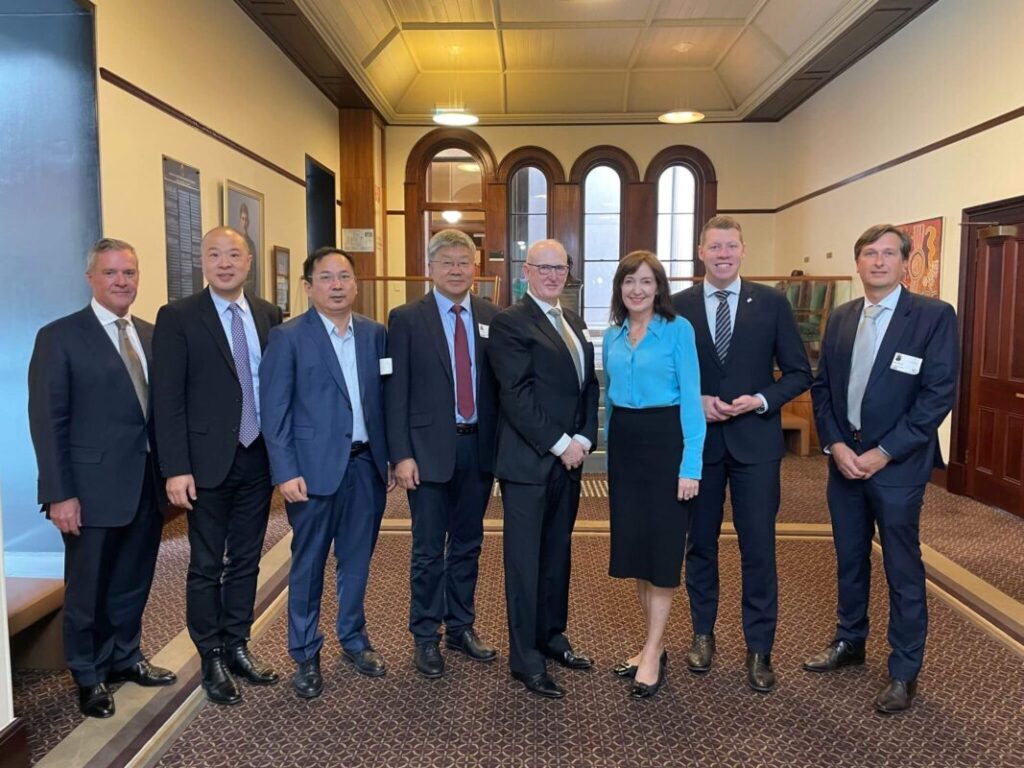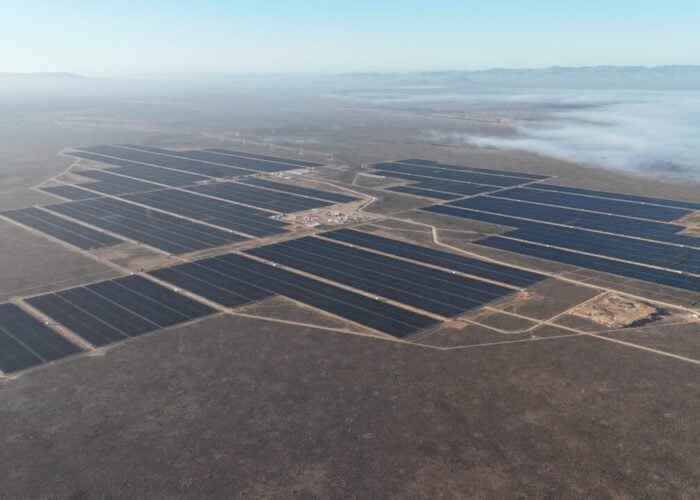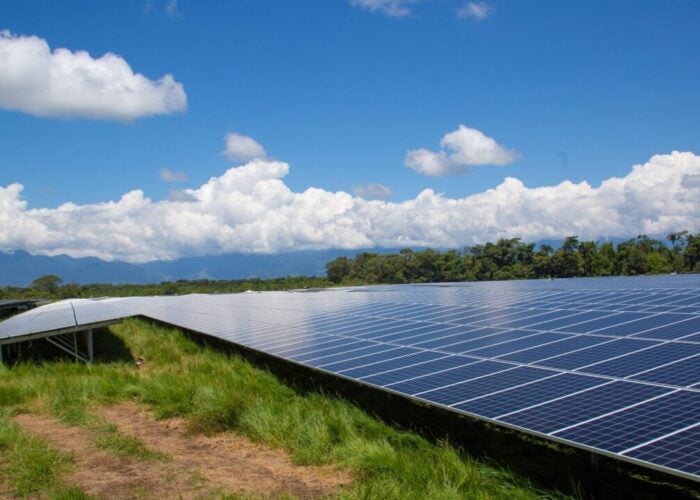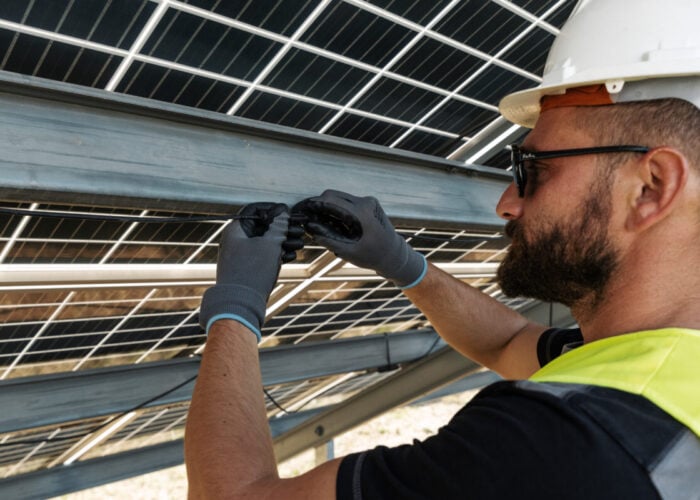
Green hydrogen and renewable energy developer Climate Impact Corporation (CIC) announced its intention last week (10 July) to develop two 10GW green hydrogen projects in South Australia and the Northern Territory using solar PV.
The projects will utilise CIC’s proprietary renewable hydrogen production modular technology. Each module contains solar panels, atmospheric water generators, electrolysers and supporting infrastructure to produce hydrogen as a standalone unit.
Try Premium for just $1
- Full premium access for the first month at only $1
- Converts to an annual rate after 30 days unless cancelled
- Cancel anytime during the trial period
Premium Benefits
- Expert industry analysis and interviews
- Digital access to PV Tech Power journal
- Exclusive event discounts
Or get the full Premium subscription right away
Or continue reading this article for free
These projects can be delivered entirely off-grid, decreasing the strain that could occur. Anotcritical key component is that the project does not need an off-site water supply. Instead, it opts to use atmospheric water, which nullifies the water scarcity factor when considering developing the 10GW green hydrogen projects.
Although currently in early-stage plans, the projects would be the “largest green hydrogen projects developed in Australia to date”, CIC said.
According to a statement released by the company, CIC has been considering developing a 10GW renewable hydrogen project in South Australia for “well over two years” and recently met with members of the South Australian government in Adelaide last month. These included the deputy premier, Susan Close, and the minister for trade, Joe Szakacs. The meeting aimed to discuss project plans and seek the government’s support.
Specifics as to the amount of generation capacity the solar element of the project would deliver were not disclosed.
Australia’s green hydrogen opportunity
David Green, chairman and co-founder of the CIC, said the approach would unlock inland hydrogen production opportunities in solar-rich locations such as the Northern Territory and South Australia.
“Renewable hydrogen production requires a significant amount of energy and water, which aren’t often found together in places like Australia,” Green said.
“Rather than repeating the same approach, we’re looking to solve this challenge by creating modules that use Australia’s abundant solar resources combined with proven atmospheric water generation technology. It’s an approach that solves one of Australia’s biggest challenges in becoming a renewable hydrogen superpower, and we’re excited to be bringing it to market first in Australia.”
Indeed, given the amount of renewable energy generation that could be available to Australia, one can see why the country has such lofty ambitions for green hydrogen production, with many touting that it will become a global “hydrogen superpower” in the coming years.
Given the current installed solar capacity across Australia, which, according to the Australian PV Institute, hit 34.2GW at the end of 2023, the technology has been positioned as a key supplier of renewable energy to produce green hydrogen. This is further supported given that deployment figures for solar PV do not seem to be slowing down.
It is also worth noting that solar is expected to play an integral role in enabling Australia to reach its lofty 2030 hydrogen target via its National Hydrogen Strategy. Instead of a production target, Australia is looking to reduce the cost of green hydrogen by AUS$5.80 (US$3.93) per kg in the next decade to meet the stretch target of under AUS$2.80 per kg by 2030. The strategy is, however, under review.
Several key developments have occurred in recent years aided by the right incentives for international investment in the country’s green hydrogen market. For instance, in 2022, energy major BP confirmed it would acquire a 40.5% stake in and become the operator of a green hydrogen project in Western Australia that could feature up to 26GW of solar and wind when complete.
In more recent times, the Aboriginal Clean Energy Partnership reached agreements in July 2023 that set the organisation up to develop a green hydrogen production facility in Western Australia powered by a 900MW solar PV plant.
South Australian-based solar farm developer Green Gold Energy confirmed it would explore future green hydrogen production opportunities at a 108MW solar farm in South Australia that it gained development approval to construct the project last week (11 July).






